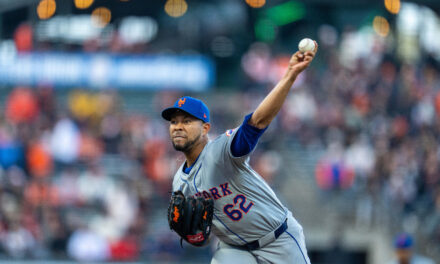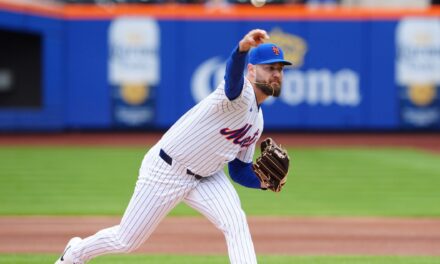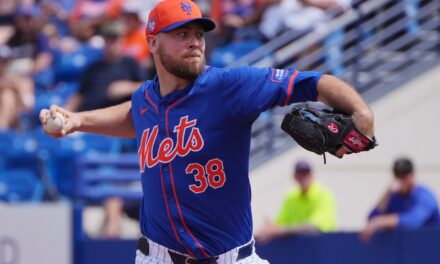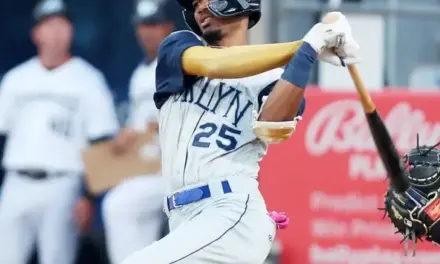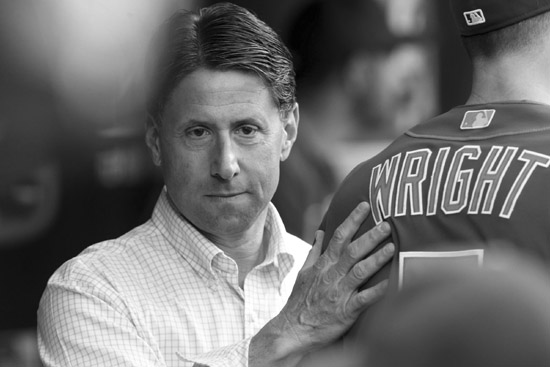
Sustainability.
Wikipedia tells us: In ecology, sustainability is the capacity to endure; it is how biological systems remain diverse and productive indefinitely. Long-lived and healthy wetlands and forests are examples of sustainable biological systems. In more general terms, sustainability is the endurance of systems and processes.
It seems like every time a member of the Mets front office is questioned about the possibility of the Mets inking a sizable free agent contract the words “payroll flexibility” come up. It conjures images of a payroll clerk with one of those transparent green hat-visors doing leg stretches … but it’s not that. It’s all about living within one’s means so that your payroll commitments allow for the occasional big splash, provided it falls within a schedule of staggered moderate splashes. What you want to avoid is multiple big splashes at the same time or a really really big splash — that can put you underwater, to coin a phrase … And it’s all about coin, make no mistake.
The Mets of recent years have shed big contracts like a rattlesnake with psoriasis sheds scales. They have been hovering in the bottom third of MLB payroll since 2013 and haven’t made a significant long-term commitment to a player since they signed David Wright in 2012. They seem incapable of going beyond four years in any scenario, and while it was reported they’d go that long for Ben Zobrist, this offer was never a formal paper contract put on a real table in front of the actual Ben Zobrist — it was only an idea, a draft in a cloud, an illusion. Oh sure they ran Zobrist’s price up and yeah maybe they made a token offer over a pay-phone from the hotel parking lot, but the speed with which they went to “plan B” (Neil Walker) made it apparent that Walker may have been plan A all along. Cheaper, shorter term, and younger.
Since then the Mets have signed Bartolo Colon for $7 million, Jerry Blevins for $4 million, Asdrubal Cabrera for $8.25 million, and Alejandro De Aza for $5.75 million, putting current Mets payroll, after the arbitration dust settles, at somewhere around $107 million. Adam Rubin believes the Mets are just about done, needing maybe a bullpen arm and a bench piece with De Aza as the lefty hitting complement to Lagares. It occurred to me that if this is the case, De Aza (a fringe 4th outfielder type) complementing a rotation estimated to be worth a billion dollars in future value is like pouring ketchup over braised rack of lamb. It’s like stuffing a Luis Vuitton handbag with mashed potatoes from the casino buffet. Like using regular gasoline in a Bugatti Veyron … I could go on …
The Mets, in adhering to their sustainability doctrine which stipulates avoiding long-term deals like a box in a laboratory marked “plague rats — deceased,” continue to emphasize the import of staggered commitments, effectively conferring the flexibility to secure viable replacements. Only they aren’t really making even moderate commitments.
There’s a problem with this continued Met frugality. At some point you have to bring back the guy with the hat-visor and the half pencil so you can account for increases in spending across MLB. If players make more now than they did when Curtis Granderson signed, it’s going to cost more to replace him when his contract is up. It’s basically a cost of living (in MLB) adjustment. The Mets have barely budged from their 2002-ish payroll in spite of spending increases across the league and in spite of their trip to the World Series. Is this a function of ownership’s debt, or are the Mets genuinely sticking to their austere principles?
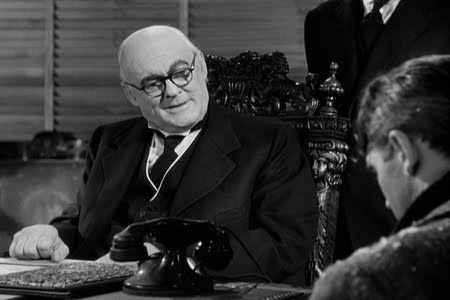
While the truth probably involves some viscid slurry of both, it is certainly evident that most long term deals end disastrously. There is also no doubt that the “offense on the fly” S.F. Giant approach works like a charm. But lets not kid ourselves, believing that the Mets’ limited payroll has nothing to do with the Wilpons is like believing It’s A Wonderful Life is about a thrifty handicapped entrepreneur who is thwarted in his attempts to revitalize a stifling ho-hum community by a bunch of lazy “garlic eaters.”
The Mets front office has earned some slack. It is, after all, difficult to predict how a season will unfold … The variables and contingencies are legion in the 162 game slog that is baseball’s regular season. Fortifying a roster with versatile and inexpensive players at the outset gives you a better shot at addressing needs as they arise. Hard to tell what the Mets are going to need in July when the calendar says December. Still, the need for a middle of the order bat seems like a given and Cespedes appeared to fit the bill quite nicely. Emptying the farm in June for the annual slugger du-jour isn’t very sustainable either, especially when you consider that the resurgent farm is perhaps the single biggest reason behind the 2015 Mets’ playoff run
For Mets fans there is a wait and see tautness to this off-season with a bit of guarded optimism. The front office has been on something of a roll with player moves and it’s hard to complain coming off a wildly successful 2015 campaign. There’s a very real possibility that the frugal approach may have less to do with the Wilpons’ debt and more to do with a doctrine that emphasizes controllable pitching assets, youth, complementary short-term pieces, and the absolute avoidance of the mega-deal. You can’t deny it worked in 2015. Will the Mets have the capacity to endure? To be productive indefinitely? To reproduce success through their systems and processes? Will this new Met eco-system succeed with beautiful and diverse species thriving within their means, or will it suffocate from a lack of resources like the greasy surface of a murky Flushing bog mottled with belly-up lab rats?


